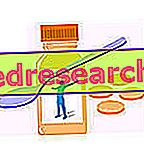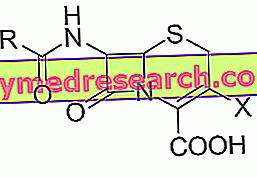
About Red Stack - Ke Forma
RED STACK- KE FORM
Food supplement based on dry natural extracts.
FORMAT
Jar of 90 capsules
COMPOSITION
Citrus aurantium rind dry extract (synephrine 6%); Ginger dry extract (gingerol 5%); Caffeine; Powdered chilli peppers; Willow bark (salicin 15%); Theobromine; Phenylalanine; Tyrosine; Taurine; Iodide potassium; Anti-caking agent: silicon dioxide. Casing: edible gelatin
| Media Analysis | Per 100 gr | per daily dose |
| Citrus Aurantium es | 32.3 g | 490 mg |
| of which Sinefrina | 1.9 g | 30 mg |
| Ginger 5% ex | 3.9 g | 60 mg |
| of which gingeroli | 0.2 g | 3 mg |
| Willow es 15% | 6.6 g | 100 mg |
| of which Salicina | 0.9 g | 15 mg |
| Caffeine | 13.2 g | 200 mg |
| Theobromine | 6.6 g | 100 mg |
| L-Tyrosine | 6.6 g | 100 mg |
| Chili Powder | 3.9 g | 60 mg |
| L-Taurine | 6.6 g | 100 mg |
| L-Phenylalanine | 13.2 g | 200 mg |
| Iodine | 9.9 mg | 150 mcg |
Product characteristics of Red Stack - Ke Forma
Thermogenesis: maintaining body temperature is of vital importance for the human organism, which is committed to keeping it constant both through a series of easily observable mechanisms and through the activation of deep and unconscious processes. Among the most immediate and rapid adjustment methods we recall:
the thermogenesis with shiver, characterized by an asynchronous contraction of agonist and antagonist muscles, necessary to increase the production of heat up to 3 times compared to the basal condition;
peripheral vasoconstriction and central vasodilation, necessary to keep vital organs metabolically active.
Alongside the shiver, a series of other biochemical processes is established, including the activation of the sympathetic system and belonging to the so-called thermogenesis without thrill; these mechanisms guarantee the production of heat through the breaking of chemical bonds and through the conversion of chemical energy into thermal energy. All these biochemical events are active processes, which require a significant energy expenditure that inevitably affects the daily energy requirement. It is no coincidence that thermogenesis is also used as a weight control method by the body, which can thus maintain its weight even when subjected to high calorie diets (provided that these processes are particularly active).
If the various foods contribute to this energy expenditure, affecting the obliged thermogenesis induced by the diet - that is the caloric expenditure necessary to digest, absorb and metabolize a given nutrient - the specific integrators determine the induction of an optional thermogens, guaranteed by the presence of specifications substances capable of modulating the sympathetic nerve response and acting specifically on certain tissues.
Among the most active tissues in this sense we find the ubiquitous liver (central organ in human metabolism), muscle tissue and adipose tissue. In particular, a specific variant of this tissue - known as brown adipose tissue, present in high quantities during fetal life and concentrated only in small foci in the adult human organism - is highly involved in the genesis of heat, thanks to the presence of uncoupling proteins they allow to dissipate the mitochondrial proton gradient in thermal energy, without the production of ATP.
Thermogenesis and weight loss
From the brief presentation given, it is clear how thermogenesis can be useful to control body weight, and how inevitably body weight can influence the body's thermogenic abilities. In particular, during a slimming process supported by low-calorie diets, there is inevitably a reduction in the body's thermogenic capacity, which affects the continuation of the weight loss. And this is one of the points of discussion still open, on which to work in order to make slimming gradual, less stressful and lasting.
Thermogenesis and thermogenic
Thermogenic supplements are therefore born with the aim of supporting the body in thermogenesis, mainly acting at the level of optional thermogenesis and acting as a sympathetic mimetic and receptor modulators.
Product composition in brief:Red Stack - Ke Forma
Dry bitter orange extract 490 mg, of which synephrine 30 mg: plant of south east Asia rich in flavonoic glycosides, coumarin, aldehydes and monoterpenes. Among the most biologically active principles we can mention synephrine and octopamine. Their effects materialize in one:
- Mimetic sympathetic action: they are able to activate alpha 1 adrenergic receptors and induce peripheral vasoconstriction;
- Thermogenic action: first experimental evidences show the ability of these principles to act on beta 3 receptors.
Various disorders are associated with the intake of synephrine, from tremors to headaches, from tachycardia to hypertension, up to arrhythmias and cardiac arrest; however, the potentially dangerous quantities are not known.
Ginger 60 mg, of which gingerols 3 mg: the main effects of this plant are due to the presence of gingerols (contained in the extracts of dry ginger). It is believed that these products can exert an antiemetic, anti-inflammatory, hepatoprotective and thermogenic action. In particular it is believed that they can act by stimulating thermoregulatory receptors, inhibiting serotonin-induced hypothermia and stimulating the secretion of cytokines with a pyrogenic effect.
Willow 100 mg, of which salicin 15 mg: bark rich in salicylates, flavonoids and essential oil. Among the salicylates, the most abundant is salicin, known for its anti-inflammatory, anti-fever and pain-relieving properties, and for the absence of the classic side effects of acetylsalicylic acid (gastric mucosa irritation and increased haematic fluidity) . Particular attention should be paid to individuals allergic to salicylates .
Caffeine 200 mg: methylxanthine commonly introduced through coffee; an espresso can in fact contain up to 100mg. After intake, caffeine is rapidly circulated and used by various tissues. It acts therefore at different levels, on the stomach, promoting acid secretion, on the heart, increasing its frequency and contractile intensity, on the respiratory system, improving ventilatory capacity, on muscle tissue, improving its contraction, and on the nervous system, increasing the secretion of catecholamines with consequent activation of the sympathetic system, important for supporting thermogenesis. The maximum safe dose used in the studies is 300 mg, beyond which there are tremors, anxiety, tachycardia, insomnia and excitement. On the other hand, prolonged use is an important risk factor for diseases of the gastrointestinal, cardiovascular and nervous tract (migraine).
Theobromine 100 mg: alkaloid extracted from the cocoa plant. It belongs to the xanthine family and as such has the same effects as caffeine, although more modest. The lethal doses of this alkaloid are around 330 mg per kg, but even at lower doses it can cause tremor, restlessness, nausea and anxiety.
L- Tyrosine 100 mg: polar amino acid not essential for humans. It is part of the synthesis of certain hormones, such as thyroxine and catecholamines. The positive effect on the hormonal profile - which is found with an increase in the blood levels of these hormones - seems to have a positive impact on both the psychic and the physical sphere. The daily requirement is between 500 and 1500 mg, but excessive intake could interfere with normal hormonal secretion.
Chili pepper powder 50mcg: important for the presence of capsaicin, responsible for the sensation of immediate burning and subsequent relief following its intake. The pain stress induced by this alkaloid results in a release of catecholamines and an enhancement of the sympathetic response. However, capsaicin is also known for its anti-inflammatory and pain-relieving properties.
L-Taurine 100 mg: conditionally essential amino acid, produced from sulfur amino acids such as methionine and cysteine, particularly concentrated in the skeletal and cardiac muscles, and in the brain. It is part of numerous biological functions, such as the protection of oxidative damage, and the modulation of the immune response; moreover, it seems to help caffeine in its stimulating action.
In sports, taurine has been used successfully in reducing oxidative damage induced by intense physical activity, effectively protecting muscle structures, already at doses of 1.5 gr / day.
L-phenylalanine 200 mg: non-polar amino acid essential for the human body. Also as a precursor of tyrosine it can be actively involved in the synthesis of catecholamines and dopamine, improving cognitive abilities. It also appears to be involved in regulating the hunger / satiety cycle, reducing appetite.
Iodine 150 mcg: quantity needed to satisfy daily energy demands. Iodine is part of the synthesis of thyroid hormones, involved in numerous biological reactions; iodine deficiencies are quite frequent in some areas of the planet, and manifest themselves with mental disorders, goiter, hypothyroidism and growth retardation. Excessive doses are responsible for an acute symptomatology, characterized by gastric burning, nausea, vomiting, diarrhea and coma, and a chronic one, characterized by hyperthyroidism and a higher incidence of thyroid carcinomas. These symptoms would occur for dosages above 1.1 mg / day (1100 mcg).
Rationalization of integration in the Red Stack - Ke Forma sports practice
Despite the literature concerning the individual compounds of the product Red Stack - Ke Forma is particularly rich, lacking an equally scientific wealth relative to the thermogenic in commercial formulation.
From the few articles present, however, a real effectiveness of these products appears to increase the daily energy requirement by up to 20%. This ability, in a low calorie diet and programmed physical activity, could positively affect weight reduction. It is in fact essential to clarify that the thermogenic ONLY IS NOT ABLE TO GUARANTEE A SLIMMING EFFECT, and that this can only be achieved as part of a well-calibrated diet plan.
It would also be appropriate to reiterate that thermogenic is NOT synonymous with fat burners, given the diverse literature that demonstrates that these products do not shift the metabolism towards the lipidic one, but only create a greater caloric expenditure.
Recommended use by the company - Red Stack - Ke Forma
We recommend taking two capsules a day, possibly before meals
Red Stack - Ke Forma side effects
The presence of alkaloids and active ingredients capable of interfering with the hepatic enzyme chain, responsible for drug metabolism, could definitely alter the pharmacokinetic properties of certain active ingredients, enhancing or reducing their effects.
In literature there is no specific indication about potential side effects associated with the administration of the product in question, therefore these should be traced back to the side effects of the individual components.
Precautions for use Red Stack - Ke Forma
The product Red Stack - Ke Forma is contraindicated in cases of renal or hepatic disease, cardiovascular disease and / or hypertension, pregnancy, lactation and age less than 12 years, as well as in adolescents not yet trained.
The Red Stack - Ke Forma product must be used as part of an adequate low-calorie diet, following a healthy lifestyle with a good level of physical activity. If the diet is followed for prolonged periods, over 3 weeks, it is advisable to consult a medical opinion.
This article, elaborated on the critical re-reading of scientific articles, university texts and common practice, is for informational purposes only and is therefore not a medical prescription. It is therefore always necessary to consult your doctor, nutritionist or pharmacist before starting to use any kind of supplement . More information on the critical analysis of Red Stack - Ke Forma.
| BIBLIOGRAPHY |
| Obesity (Silver Spring). 2010 May 6. [Epub ahead of print]Brown Adipose Tissue, Whole-Body Energy Expenditure, and Thermogenesis in Healthy Adult Men. Yoneshiro T, Aita S, Matsushita M, Kameya T, Nakada K, Kawai Y, Saito M. The role of importance of brown adipose tissue in energy homeostasis. Cypess AM, Kahn CR. Curr Opin Pediatr. 2010 May 17. [Epub ahead of print] Cold thermoregulatory responses following exertional fatigue. Castellani JW, Sawka MN, DeGroot DW, Young AJ. Front Biosci (Schol Ed). 2010 Jun 1; 2: 854-65. Cellular bioenergetics as a target for obesity therapy. Tseng YH, Cypess AM, Kahn CR. Nat Rev Drug Discov. 2010 Jun; 9 (6): 465-82. Review. Adaptive reduction in thermogenesis and resistance to lose fat in obese men. Tremblay A, Chaput JP. Br J Nutr. 2009 Aug; 102 (4): 488-92. Long-term persistence of adaptive thermogenesis in subjects who have maintained a reduced body weight. Rosenbaum M, Hirsch J, Gallagher DA, Leibel RL. Am J Clin Nutr. 2008 Oct; 88 (4): 906-12. JD, Lovallo WR (1996). Influence of grapefruit juice on caffeine pharmacokinetics and pharmacodynamics. Pharmacotherapy 16 (6): 1046- Effect of grapefruit juice and its bitter principal, naringenin, on CYP1A2 dependent metabolism of caffeine in man. Br J Clin Pharmacol 35 (4): 431-6. RK Bhardwaj, H. Glaeser, L. Becquemont, U. Klotz, SK Gupta, MF Fromm (2002). Piperine, a major constituent of black pepper, inhibits human P-glycoprotein and CYP3A4. . J. Pharmacol. Exp. Ther. 302 (2): 645-5 www.smartdrug.com Phytotherapy manuals Effects of ingesting a commercial thermogenic product on hemodynamic function and energy expenditure at rest in males and females. Wilborn C, Taylor L, Poole C, Bushey B, Williams L, Foster C, Campbell B. Appl Physiol Nutr Metab. 2009 Dec; 34 (6): 1073-8. Acute effects of a thermogenic nutritional supplement on low-intensity exercise, and recovery from exercise. Ryan ED, Beck TW, Herda TJ, Smith AE, Walter AA, Stout JR, Cramer JT. J Strength Cond Res. 2009 May; 23 (3): 807-17. The acute effects of the thermogenic supplement Meltdown on energy expenditure, fat oxidation, and hemodynamic responses in young, healthy males. Jitomir J, Nassar E, Culbertson J, Moreillon J, Buford T, Hudson G, Cooke M, Kreider R, Willoughby DS. J Int Soc Sports Nutr. 2008 Dec 16; 5: 23. Body fat loss achieved by stimulation of thermogenesis by a combination of bioactive food ingredients: a placebo-controlled, 8-week double-blind intervention in obese subjects. Belza A, Frandsen E, Kondrup J. Int J Obes (Lond). 2007 Jan; 31 (1): 121-30. Epub 2006 Apr 25. Bioactive food stimulants of sympathetic activity: effect on 24-h energy expenditure and fat oxidation. Belza A, Jessen AB. Eur J Clin Nutr. 2005 Jun; 59 (6): 733-41. |



